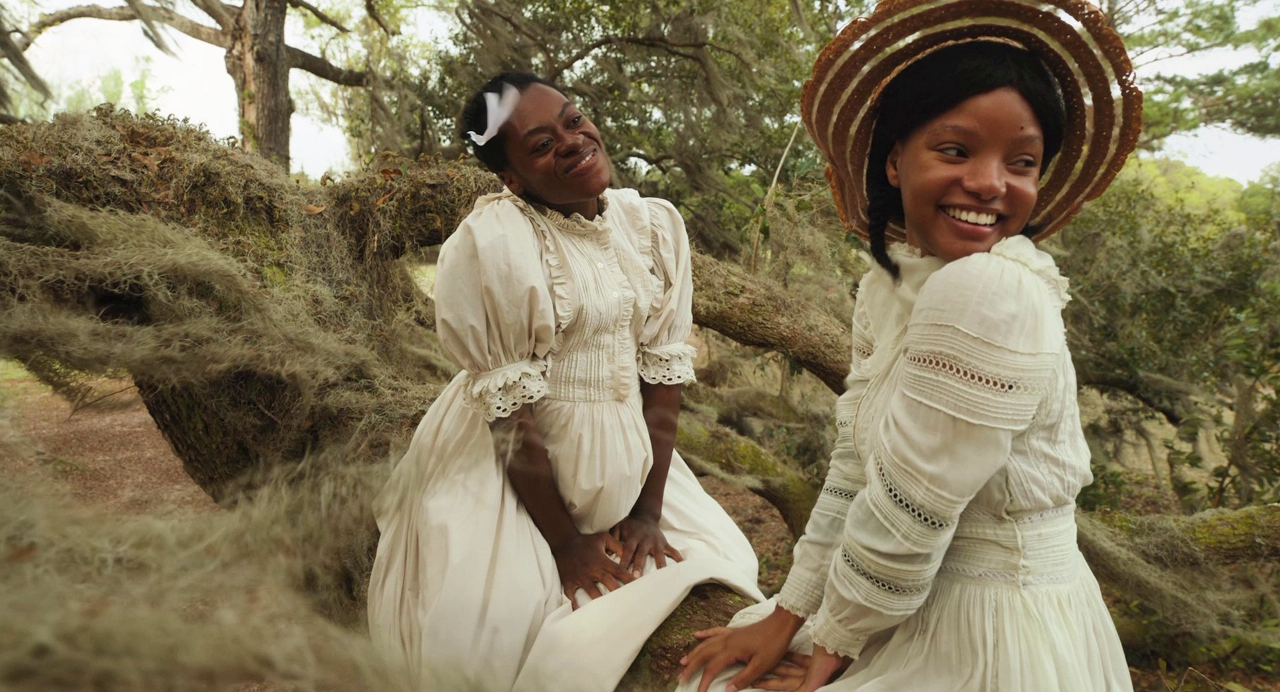The Color Purple
Rating
![]()
Director
Blitz Bazawaule
Screenplay
Marcus Gardley (Musical: Marsha Norman; Novel: Alice Walker)
Length
2h 20m
Starring
Fantasia Barrino, Taraji P. Henson, Danielle Brooks, Colman Domingo, Corey Hawkins, Phylicia Pearl Mpasi, Halle Bailey, Ciara, Gabriella Wilson ‘H.E.R.’, David Alan Grier, Deon Cole, Jon Batiste, Louis Gossett Jr.
MPAA Rating
PG-13
Original Preview
Review
The movie musical has undergone many changes since its first heyday in the 1920s. While there are some elements of that still alive in The Color Purple, they aren’t necessarily the best ones.
Based on the stage musical of the same name, which was based partly on Alice Walker’s seminal novel and the Steven Spielberg film from 1985, all four of them depict the struggles of Black women in the south during the early 20th century. Not only were they castigated and shamed by the white population, they were treated as second class citizens by the Black men of their community. This tale centers on Celie (Fantasia Barrino as the older, Phylicia Pearl Mpasi as the younger), a young Black woman who is married off at a young age to the self-named Mister (Colman Domingo) who rapes and abuses her, just like her father did, throughout their years of marriage.
Celie slowly comes to realize her strength as a woman thanks to the support she gets from fellow women who’ve been exiled or shunned because of who they are. Shug Avery (Taraji P. Henson) used to be Mister’s wife but left to pursue a singing career in the big city. She’s considered “loose” by others in town, but that doesn’t prevent her from turning everyone out for her return performance at Mister’s son Harpo’s (Corey Hawkins) club. Harpo’s wife and later ex-wife Sofia is another of her supporters. Sofia (Danielle Brooks) is brassy and assertive, something most men don’t like and white folk won’t tolerate. These two help bring Celie out of her indentured servitude to stand tall as her own woman while considering the risks they faced.
There are a lot of moving parts in The Color Purple. It spans multiple decades and while it tackles homosexuality more strongly than Spielberg’s film did, it downplays the rape elements a bit too much. This is supposed to be a difficult story about challenging times in the lives of Black women. Yet, it’s also supposed to celebrate and lift them up, showing them that they can overcome the various struggles at their feet and become their own people.
The Color Purple may be a conceptual derivation of the screen-to-stage-to-screen pipeline that’s become a cottage industry in Hollywood and Broadway, but what director Blitz Bazawule does has a lot of connections to the spontaneous dance routine, plot-tangential numbers that populated many of the best and worst MGM musicals. There are several songs (and not all of them from the stage version) featured in this 2 hour 20 minute behemoth, but they only seem loosely related to the events on screen. Like those old Hollywood musicals, all of the action and narrative stops so that the people on screen can sing and dance their hearts out before returning to the story. This halting approach takes the viewer out of the film each time, making it difficult to not feel the weight of the full length of the film. The dance numbers are sensationally choreographed, but they are static and largely unmoving.
Something Bazawule could have learned from Spielberg in his recent musical re-adaptation of West Side Story was how to highlight the choreography without locking in angles. Spielberg’s use of sweeping camera shots, quick but impactful edits, and general sense of movement are sorely missing in this effort. Bazawule’s direction is turgid and stagnant, which makes it difficult to latch onto the essence of the film.
That’s eased somewhat by the performances. Henson, delivering a performance she’s given in parts before, is the weakest link in the film. While her intimate moments with Celie are often the most appealing, her exaggerated behavior in public sticks out in a film of more subtle performances such as those by Hawkins, Gabriella Wilson (H.E.R.) as Harpo’s second wife Squeak, Halle Bailey as Celie’s sister Nettie at a young age, and Barrino in the lead. Domingo is an absolute cad in the film as Mister, which fits the stereotype fine, but he feels like a caricature much like Louis Gossett Jr. as his father.
That leaves the film’s standout. Brooks is sensational and becomes the emotional lynchpin. Her character arc feels more dynamic than in Spielberg’s film, though Brooks is on par with Oprah’s earlier work in the same role. She gives Sofia the confidence to pull the audience into her plight and, inher second act confrontation with the white mayor and his wife, that bravado is quickly tempered and all her self-assurance is wiped away in an instant, a condemnation of the period and all its heinousness and ignominy.
Finding joy in the heart of sorrow is no easy feat and while there are stylistic and structural issues with The Color Purple, its celebration of perseverance and indomitable spirit is infectious. It may try your patience at times, but there are sparks of brilliance here that frequently outweigh the weaker moments. By the time the film’s finale arrives, an Easter celebration of vast emotional depth, the audience should be more than happy with the ultimate journey.
Oscar Prospects
Probables: Supporting Actress (Danielle Brooks), Costume Design
Potentials: Production Design, Makeup & Hairstyling, Sound
Unlikelies: Picture
Review Written
December 20, 2023



















Leave a Reply